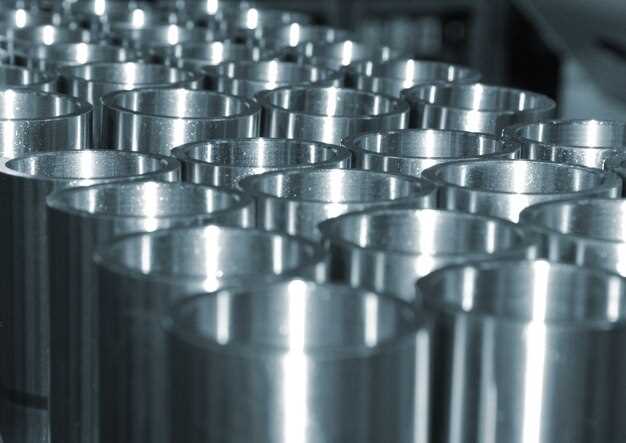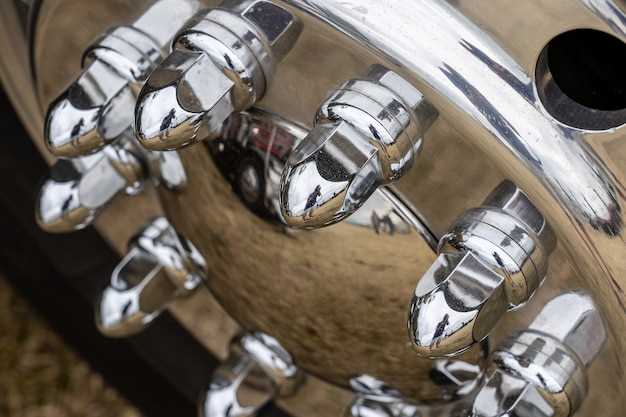
When it comes to automotive performance, the choice of exhaust material can significantly impact efficiency, weight, and sound quality. Two popular materials for exhaust systems are titanium and stainless steel, each presenting its own set of advantages and disadvantages. Understanding these differences is crucial for car enthusiasts and professionals alike aiming to optimize their vehicle’s performance.
Titanium is renowned for its exceptional strength-to-weight ratio and resistance to corrosion. This lightweight material not only enhances performance by reducing the overall weight of the vehicle but also maintains high durability in extreme temperatures. Its ability to withstand harsh environmental conditions makes it an appealing choice for performance applications.
On the other hand, stainless steel has long been favored for its robustness and affordability. This material provides excellent resistance to rust and can handle high levels of stress, making it a reliable choice for various driving conditions. While heavier than titanium, stainless steel offers a solid performance at a lower price point, making it accessible for a wider audience of car enthusiasts.
In this article, we will delve into a detailed performance comparison of titanium and stainless steel exhaust systems, exploring their benefits, drawbacks, and overall impact on vehicle performance. Through this analysis, we aim to equip you with the knowledge needed to make an informed decision regarding your next exhaust system upgrade.
Weight Differences and Their Impact on Vehicle Handling

One of the most significant differences between titanium and stainless steel exhaust systems is their weight. Titanium exhausts are notably lighter than their stainless steel counterparts, often weighing up to 50% less. This reduction in weight has profound implications on vehicle handling, performance, and overall driving experience.
Lower weight contributes to improved power-to-weight ratio, allowing the vehicle to accelerate more quickly. Lighter exhaust systems reduce the overall mass of the vehicle, which can enhance responsiveness during acceleration and braking. This is particularly beneficial for performance cars where every kilogram counts towards achieving optimal dynamic performance.
In addition to acceleration, the weight difference affects the vehicle’s center of gravity. A lighter exhaust system contributes to better weight distribution, which can improve cornering stability. Improved handling can result in a more agile and responsive driving experience, allowing drivers to navigate corners with greater confidence and precision.
Furthermore, reducing unsprung weight–that is, weight not supported by the vehicle’s suspension–can lead to enhanced suspension performance. When the exhaust system is lighter, the suspension can react more quickly to road imperfections, improving overall ride quality and control. This results in better traction and grip, particularly in high-performance driving scenarios.
The lighter nature of titanium also reduces stress on mounting points and related components, potentially increasing their longevity and lowering maintenance costs over time. However, it is essential to balance the benefits of a lightweight exhaust with the need for structural integrity and durability, which are strengths often found in stainless steel systems.
Ultimately, the choice between titanium and stainless steel exhaust systems extends beyond mere aesthetics and sound. The weight differences play a crucial role in how a vehicle handles, accelerates, and performs as a whole. Car enthusiasts seeking optimal performance should consider these factors carefully when selecting their exhaust system.
Durability and Corrosion Resistance in Real-World Conditions

When evaluating the performance of titanium and stainless steel exhaust systems, durability and corrosion resistance under real-world conditions play a crucial role. Titanium, known for its exceptional strength-to-weight ratio, is less prone to physical damage compared to stainless steel. It can withstand higher temperatures without deforming, making it ideal for high-performance vehicles that operate under extreme conditions.
Corrosion resistance is another area where both materials differ significantly. Titanium is naturally resistant to corrosion due to the formation of a protective oxide layer when exposed to air. This makes it highly effective in environments with high moisture or salt exposure, such as coastal regions or regions with frequent road salt use in winter. In contrast, while stainless steel also offers considerable corrosion resistance, its effectiveness can diminish over time, particularly if the protective chromium oxide layer is compromised through scratches or environmental factors.
In practical applications, the longevity of titanium exhausts can be significantly greater than that of stainless steel under harsh conditions. This is particularly relevant for motorsport applications where exhaust systems are subjected to extreme temperatures and corrosive elements. Furthermore, titanium’s lightweight properties can contribute to improved vehicle handling and performance, further enhancing its appeal in high-performance scenarios.
However, it is essential to consider the cost factor. Titanium exhaust systems are generally more expensive than their stainless steel counterparts, reflecting the material’s advanced properties and manufacturing techniques. For many everyday drivers, stainless steel exhausts may provide sufficient durability and corrosion resistance at a lower price point, making them a more practical choice for typical driving conditions.
Ultimately, the choice between titanium and stainless steel exhaust systems should be informed by the intended use, environmental conditions, and budget. For enthusiasts seeking maximum performance and longevity, titanium represents the pinnacle of exhaust technology, while stainless steel remains a robust and cost-effective solution for everyday drivers.
Sound Quality and Exhaust Note Variations Between Materials
The choice of material for exhaust systems significantly impacts both sound quality and exhaust note. Titanium and stainless steel exhibit distinct acoustic properties, leading to unique sound characteristics that can enhance or alter the driving experience.
Titanium exhausts are known for their lightweight nature and ability to produce a sharper, more aggressive sound. The material’s density and stiffness contribute to a higher-frequency exhaust note, often resulting in a sportier and more exhilarating sound profile. Vehicle enthusiasts often prefer titanium for applications where weight savings and performance are prioritized.
In contrast, stainless steel tends to produce a deeper, more resonant sound. This material, typically heavier than titanium, dampens some of the higher frequencies, resulting in a more robust and full-bodied exhaust note. Stainless steel exhaust systems are often favored for their durability and long-lasting performance, providing a rich sound that can enhance the overall driving experience.
Variations within each material can also affect sound quality. For instance, the thickness of the material, the design of the muffler, and the overall configuration can lead to significant differences in tone and volume. Titanium exhausts may be designed to enhance specific frequencies, creating a distinctive growl, while stainless steel systems might focus on broader frequency responses, delivering a more balanced sound.
Ultimately, the choice between titanium and stainless steel for exhaust systems comes down to personal preference regarding sound quality. While titanium offers an aggressive and lightweight option that appeals to performance-driven enthusiasts, stainless steel provides a more traditional and rich exhaust note that many drivers find enjoyable.


